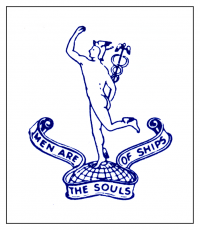Article from Portsmouth Evening News 25th January
SHIP NAMED AFTER HERO OF TWO NAVIES IN BOTH WORLD WARS RESCUES HUNDREDS FLEEING AUSTRALIAN BUSH FIRE INFERNOS
Royal Navy helicopter pilot Lieutenant Commander Nick Grimmer, on exchange with the Royal Australian Navy, has been flying up to 10 hours a day helping to evacuate over 1,000 people trapped in the bush fire infernos from Mallacoota on Victoria’s coast to HMAS Choules (reported in last Friday’s News).
But there’s a fascinating story with an historic local connection behind rescue missions carried out from the dock landing ship, as former News defence correspondent Tim King discovered.
IT’S THE odd name of the 16,160-ton dock landing ship that is the clue as it salutes the momentous career of a lower deck sailor – a very rare honour.
Let’s go back to March 3, 1901 when Claude Choules was born in the Worcestershire village of Pershore.
He began what was to become an exceptionally long naval service as a cadet on board the Royal Navy screw sloop HMS Gannet, one of several former warships comprising the Training Ship Mercury.
Gannet, loaned by the Royal Navy as a dormitory ship for the boys’ pre-sea training, was moored near the mouth of the River Hamble and her Captain Superintendent when Claude joined aged 12 was the famous England and Hampshire cricketer C B Fry, who also played three times for Pompey as an amateur.
Claude joined the RN aged 14 in 1915 and was drafted to one of Britain’s newest battleships, HMS Revenge (32,000 tons), in 1917.
During his service in the Flagship of the 1st Battle Squadron he witnessed the surrender of the German High Seas Fleet in November 1918, when Revenge escorted it to Scapa Flow where, six months later, he watched as the Germans ignominously scuttled their armada.
And that was when Claude Choules was to enter the record books many years later. He served in the Royal Navy until 1926, then emigrated and took Australian citizenship, transferring to the Royal Australian Navy in which he served as a chief petty officer torpedo and explosives expert throughout World War 2, finally slinging his hook in 1956 after 40 years in uniform.
When he died aged 110 and 63 days on May 5, 2011, Claude Choules was the last surviving witness to the scuttling of the German Fleet, he had been the oldest British-born man, the oldest Australian man, the world’s third oldest military veteran and seventh oldest living man in the world.
Two years before his death, he became the oldest person ever to publish an autobiography with his book ‘The Last of the Last’, which is a compulsive read, particularly about the tough regime in Gannet.
HMAS Choules was launched as the Bay-class Royal Fleet Auxiliary dock landing ship Largs Bay at Swan Hunter’s Tyneside yard in 2003, but was decommissioned in 2010 and sold to the RAN in 2011.
In December that year, seven months after his death, she was renamed HMAS Choules in honour of the veteran of both world wars.
HMS Gannet’s 60-year training role ended in 1968 when TS Mercury was closed and she was handed back to the Royal Navy, which transferred her to the Maritime Trust in 1971 for restoration and preservation after years languishing in Portsmouth Harbour.
Today, you can visit her at Chatham’s Historic Dockyard – where HMS Victory was built – and tread the decks where Cadet Claude Choules once scrubbed and learned the ropes.
Among CPO Choules’ many campaign and long service medals is the one issued to mark the centenary of the Australian Navy that was formed on March 1, 1901 – just two days before he was born. The title Royal Australian Navy was conferred by King GeorgeV in 1911.
